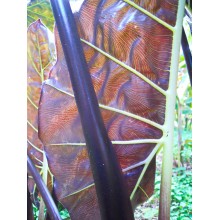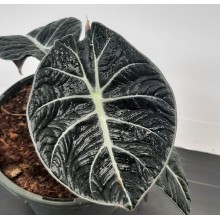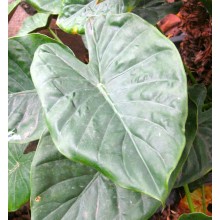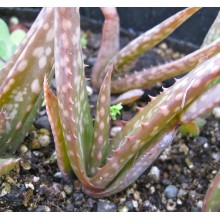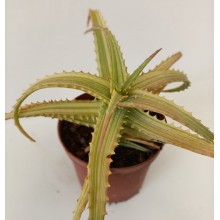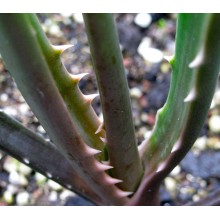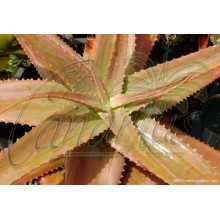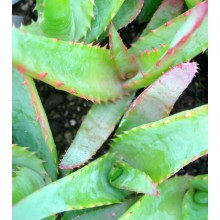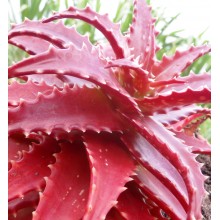Plantes générales Il y a 1885 produits.

Si vous aimez les plantes exotiques, vous venez au bon endroit. Canarius offre le dur-à-trouver des plantes exotiques qui sont rarement disponibles dans les centres de jardin. Notre magasin a des espèces naturelles ainsi que des hybrides rares. Nous offrons des plantes exotiques en provenance des Îles Canaries.
Les commandes sont envoyées partout en Europe et aussi dans le monde entier. Les colis seront atteindre votre maison dans quelques jours après l'expédition (mais nous avons aussi besoin de quelques jours pour le traitement). N'hésitez pas à nous contacter si vous avez des questions.
Sous-catégories
-
Succulentes
Les plantes les plus intéressantes habitent dans les déserts du monde et les zones sèches. Canarius propose une sélection croissante de plantes succulentes de qualité maximale, car elles sont cultivées à l'extérieur en plein soleil des Canaries.
Les succulentes ou «plantes grasses» sont des espèces de rétention d'eau, adaptées aux conditions sèches. Ils stockent succum (jus, eau) dans leurs feuilles, les tiges ou racines, et ils présentent souvent une apparence robuste et charnue.
-
Exotiques
Les plantes exotiques sont des espèces provenant de contrées éloignées, qui ne sont pas dans leur habitat naturel. Généralement, elles sont à caractère décoratif, elles disposent d’un feuillage dense avec des fleurs de couleur vive et ont une forme inhabituelle… Ci-après, vous pourrez découvrir une grande variété de plantes exotiques, allant des broméliacées, héliconies et palmiers aux plantes d’intérieur.
Les plantes exotiques n'ont pas forcément d'utilité particulière, les collectionneurs achètent ce genre de plantes avant tout pour leur rareté et pour décorer des espaces intérieurs ou en plein air, selon l’environnement.
-
Fruits, Herbes et Plantes Médicinales
Les Fruits, les Herbes et les Plantes Médicinales sont destinées à offrir une meilleure santé. Dans cette section, chaque type de plante offre des propriétés bienfaisantes, que ce soit des arbres fruitiers (le Feijoa, l’Ananas, le Fino de Jete, etc.) et des plantes pour la santé, telles que le Graviola, l’Aloe Vera, le Callisia fragrans, etc. Au sein du métabolisme normal des êtres vivants, l’organisme produit certaines substances à partir de nutriments latents dans l’environnement; certaines de ces réactions chimiques font partie du processus de toutes (ou presque) les espèces. Normalement, les composants utiles sont concentrés dans certaines parties: feuilles, graines, fleurs, etc. Découvrez quelle plante vous est recommandée et achetez-la en ligne!
-
Spécial
Sur canarius.com, nous essayons de repousser les limites du domaine de la botanique. Sur notre boutique en ligne, nous tentons de facilité le processus achat/vente des plantes partout dans le monde. C’est pourquoi, nous cultivons les espèces les plus communes ainsi que les plantes les plus spéciales, comme nous pouvons le voir dans cette section.
-
Alocasia longiloba 'Pink Dragon'
Alocasia longiloba 'Pink Dragon'
Exceedingly beautiful tropical small Alocasia , with glossy deep green leaves, with prominent silvery veins and pink petioles. Its growth habit is similar to the more widely grown Alocasia x 'Polly'.
16,40 € -
Alocasia macrorrhizos - Elephant Ear Taro
Alocasia macrorrhizos - Elephant Ear Taro
This plant produces huge leaves that can attain 1,5 in a short time. It is a must for tropical-looking gardens but it can take quite a few degrees of frost. It grows well in the coastal mediterranean, with wind protection and abundat water. The stem has some itchy sap but it is edible if cooked for a long time.
23,40 € -
Alocasia plumbea Nigra
Alocasia plumbea Nigra
A classic of all times, this Alocasia has glossy and metallic dark leaves. They show unreal colours of purple to dark green or grey. It does not need hot temperatures to thrive.
26,70 € -
Alocasia reginula 'Black Velvet'
Alocasia reginula 'Black Velvet'
This is tiny gem with unreal foliage. Alocasia reginula is a very small Alocasia, most probably from Borneo, with black, light-reflecting foliage.
28,70 € -
Alocasia wentii
Alocasia wentii
"Hardy Elephant Ear" is a species of Alocasia that can take cold much better than others. It is native to high elevations in New Guinea. Leaf blades reach only 30-40 cm but they are purple-coppery beneath. It is fast growing, it does not require hot conditions and will sprout back after mild frost.
19,40 € -
Alocasia wentii Large
Alocasia wentii Large
"Hardy Elephant Ear" is a species of Alocasia that can take cold much better than others. It is native to high elevations in New Guinea. Leaf blades reach only 30-40 cm but they are purple-coppery beneath. It is fast growing, it does not require hot conditions and will sprout back after mild frost.
44,50 € -
Alocasia x 'Sarian'
Alocasia x 'Sarian'
This extremely beautiful hybrid was developed by crossing Alocasia zebrina and Alocasia micholitziana .
34,00 € -
Alocasia x Portora
Alocasia x Portora
Cold-hardy hybrid of unrivalled beauty. It is a man-made cross of Alocasia odora x Alocasia portei, developed in Florida. It bears magnificent huge leaves, and will survive to frost, to about -10 C. Leaves can reach 1.5 m in length and trunks can grow up to 2 m tall, giving a palm-like appearance.
28,90 € -
Alocasia x Portora- Large 100 cm
Alocasia x Portora- Large 100 cm
Cold-hardy hybrid of unrivalled beauty. It is a man-made cross of Alocasia odora x Alocasia portei, developed in Florida. It bears magnificent huge leaves, and will survive to frost, to about -10 C. Leaves can reach 1.5 m in length and trunks can grow up to 2 m tall, giving a palm-like appearance.We offer a plant with a height of 100 cm and a trunk...
68,90 € -
Alocasia zebrina
Alocasia zebrina
Very beautiful species that can also be used as a potted indoor plant, Alocasia zebrina is endemic to the island of Luzon, in the Philippines archipelago. Leaves are glossy, arrow-shaped, with upright zebra-striped petioles. An astonishing pattern!
36,00 € -
Aloe abyssicola
Aloe abyssicola
We offer a 8-14 cm rooted plant. This is a distinctive mid-sized aloe that grows on cliffs, in Yemen. Rosettes grow asymmetrically on a side, with beautiful, wide dull mottled leaves with widely spaced spines.
29,40 € -
Aloe arborescens 'Variegata'
Aloe arborescens 'Variegata'
This variegated clone of Aloe arborescens is just as easy to grow and to make it bloom as the true species, which is a popular ornamental shrub from South Africa. It just grows a bit slower and smaller. Leaves are jade-green, with yellow stripes.
34,00 € -
Aloe barberae - Large
Aloe barberae - Large
6 years - 60-70 cm tall. The largest of all aloes. This South African aloe tree grows as huge as a Dracaena draco and can attain 6-16 m in height. It takes light frosts and it is a must for Mediterranean gardens.
148,00 € -
Aloe brevifolia
Aloe brevifolia
Smaller leaved form of a low growing, clumping aloe. This dwarf form has a very manageable size and it is great for pots. This species from South Africa can stand some frost.
13,80 € -
Aloe bulbilifera var. paulianae
Aloe bulbilifera var. paulianae
Aloe bulbilifera is different because it is viviparous: new pups sprout from the inflorescence and grow larger when the red flowers are gone. This is the variety called paulianae. It has an elegant rosette turning copper-pinkish in full sun.
15,20 € -
Aloe bulbilifera var. paulianae - Large
Aloe bulbilifera var. paulianae - Large
Rosette 30 - 50 cm diam. Aloe bulbilifera is different because it is viviparous: pups sprout from the inflorescence and grow larger when the red flowers are gone. This is the variety called paulianae.
22,70 € -
Aloe comosa
Aloe comosa
We offer a 13-18 cm diameter plant. This large stemmed aloe grows to a height of 1-3 m, unbranched. The bold rosette has a rusty-copper colour. It blooms with tall multiple spikes of red and yellow flowers. It is native to a small area close to Clanwilliams, e Western Cape.
15,20 € -
Aloe dorotheae - Large
Aloe dorotheae - Large
This is one of the most colourful low-growing aloes, a delightful garden plant with glossy cherry-red leaves when exposed to full sun. It is becoming increasingly popular in Tenerife, while it is critically endangered in the wild.
38,80 € -
Aloe elegans Ethiopia
Aloe elegans Ethiopia
Mid-sized stemless Aloe, widespread and locally abundant in northern Ethiopia and in Eritrea. It grows solitary or forming small groups. It grows on rocky slopes, mostly on sandstone or limestone, in areas with evergreen bushland or wooded grassland. This batch is from Ethiopian populations.
16,50 € -
Aloe erinacea
Aloe erinacea
Collector's aloe from harsh dry mountains in Namibia. It is a small gem with green-gray leaves full of white spines often tipped in red. It does not like to be overwatered!
12,50 €
Pour le moment, il ya peu de produits dans cette catégorie Plantes générales
























